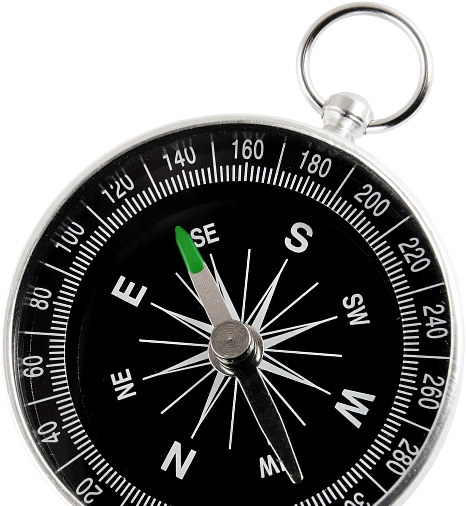5 Steps to Orchestrate Marketing Channels for Demand Generation
19 min

Executive summary:
This article outlines a five-step framework for orchestrating B2B marketing channels that align with how today’s buyers engage and make decisions:

B2B buyers explore up to 11 channels during their buyer journey (Mckinsey & Co., Digital Commerce 360 B2B buyer survey, 2024), making it imperative to orchestrate a cohesive brand experience that aligns with their expectations.
According to the Voice of the Marketer 2025 report, 61% of marketers are prioritizing investment in content and buyer experience, followed closely by advertising and promotion (58%). This reflects a broader move in the market toward engaging audiences through meaningful, personalized interactions.
However, this shift has not yet been fully realized, since 86% of B2B purchases still stall during the buying process, often due to fragmented or irrelevant brand experiences that fail to resonate with buyer’s needs (Forrester, 2024). As a result, buyers have adopted a more independent approach, completing nearly 70% of their journey before engaging with vendors—85% of which have already defined their purchase requirements by that point (6sense, 2024).
Thus, a non-prescriptive omnichannel strategy is essential to develop a cohesive experience that drives B2B buyers forward in their journeys by enabling frictionless, independent brand discovery.
What are B2B marketing channels?
B2B marketing channels are mediums (both online and offline) that brands use to engage buyers, such as email, social media, and events.
B2B marketing channels vs. Channel marketing
It is important to distinguish marketing channels from channel marketing. The former refers to the mediums used to reach audiences, while the latter refers to the channel space—a market where vendors and third-parties promote services on behalf of other organizations.
“Demand generation is now rooted in buyer-led experience, where value, relevance, and authenticity enable prospects to move forward with confidence. A successful marketing channel strategy empowers buyers to make choices on their own terms.”

Founder & CEO, INFUSE
This article presents five actionable steps to build a cohesive B2B marketing channel strategy—elevating brand awareness and empowering buyers to make qualified purchase decisions.
5 steps to orchestrate B2B marketing channels effectively
Launching a high-impact B2B marketing channel strategy requires deep audience intelligence.
The key lies in leveraging actionable audience data to inform multiple touchpoints to be deployed throughout the buyer’s journey—fostering independent brand discovery while proactively addressing their evolving pain points.
This data-driven omnichannel approach allows marketers to drive funnel velocity through a buyer-led approach that is relevant and builds trust.
The first step to any B2B omnichannel strategy is to precisely determine targeting. The channel mix and outreach should be guided by an organization’s Ideal Client Profile (ICP), which outlines the firmographic and technographic characteristics of target buyers. This includes industry, company size, revenue, budget, and tech stack.
ICPs and personas should be enriched by demand intelligence, because it allows organizations to leverage data on full buying groups and accounts, beyond individual stakeholders.
Demand intelligence collates data from client interviews, market research, and Client Relationship Management (CRM) systems. Additionally, it includes buyer intent signals, historical performance, and competitor insights to map behavioral indicators and assess both buyer journey stage and sales readiness.
Leveraging demand intelligence for ABM and ABX
Organizations with a demand intelligence database can leverage Account Based Marketing (ABM), a highly personalized, omnichannel approach to engage key accounts. This is effective in ensuring marketing channel orchestration aligns with the unique preferences and pain points of a specific account (one-to-one ABM) or a segment (one-to-few or one-to-many ABM).
Account Based Experience (ABX) expands upon ABM by incorporating principles from Customer Experience (CX) and User Experience (UX) to deliver a rich brand-to-demand experience to target buyers, resonating with them on a deeper level by addressing specific buyer challenges.
Nearly 50% of buyers will switch vendors if they encounter disruptions in the omnichannel experience. Additionally, 54% cite poor-quality digital interactions as a key reason for vendor dissatisfaction, while 51% view the lack of tracking across channels as a barrier to doing business (McKinsey, B2B Pulse Report 2024).
This buyer frustration makes it clear that engaging decision makers requires a nuanced selection of marketing channels. Developing this optimal B2B channel mix begins by understanding the organizational objectives of target accounts and buying group members.
Below are some of the most popular online and offline channels for developing cohesive B2B omnichannel strategies:
B2B channels
Online
Paid media (sponsored content, targeted display, search ads)
Website (blogs, virtual events, webcasts)
Social media platforms
Content activation via third-party publishers/networks
Communities and forums
Offline
Trade shows, conferences, exhibitions, networking groups
Direct mail
Printed collateral (flyers, brochures, data sheets)
Outbound calls
On-site workshops and training sessions
Out-of-home advertising (billboards, transit ads, street furniture)
Defining the right channel mix and budget allocation should be informed by audience data and insights. Ideally, data should be collected quarterly to identify the optimal mix to align with evolving audience preferences.
Additionally, considering the role of each buyer is essential for personalization. While executives prefer networking groups and curated communities to glean unique perspectives on the state of the market, a B2B marketing analyst may prefer reading a newsletter with actionable, best practice advice.
Maximizing B2B omnichannel content distribution
Delivering optimal outcomes from a B2B omnichannel strategy requires content distribution to be aligned identified buyer preferences, while also maximizing budget use per channel.
When planning B2B content distribution, consider these three approaches:
Ensure each approach is measured for ROI per quarter, and optimize accordingly the best mix of owned, earned, and paid media to effectively engage target buyers.
51% of buyers consider the content they consume too generic or irrelevant—a trend that has only worsened since 2023 (Demand Gen Report, 2024). To address this, organizations must craft content informed by behavioral insights, intent data, and precise buyer pain points to ensure assets are actionable and relevant.
Crafting content informed by up-to-date buyer data to enable qualified decision making is known as a buyer-led approach.
Below is a framework to design a buyer-led content strategy:
Buyer-led content strategy framework
Leverage the intelligence at your disposal to identify core themes, topics, and formats that meet preferences and buyer intent.
Organize your findings into pillars that support your Go-To-Market (GTM) motions, mapped out per month or quarter. This should include content targeting (buyer persona, buying journey stage, etc), as well as the publishing timeline. Consider outlining interlinking strategies and content series to support greater engagement and buyer enablement.
Activate your channel mix in accordance with your team’s capacity and more importantly, your target audience’s behavior preferences and objectives. Monitor each channel’s performance based on its unique goals to inform optimizations or removing the channel entirely if needed.
Enrich your intelligence with data on content performance, including the role of content in key touchpoints in your buyer’s journey. Bolster these findings with feedback from your client-facing teams on content pieces that influenced deals.
Apply data insights to your content maps, channel mix, and your content audit process. This will help you maximize the impact of your content, at minimal cost.
A structured approach, grounded by KPIs, ROI goals, as well as routine data analysis and testing is essential to achieve expected outcomes and long-term success.
Below are best practices for marketing channel optimization:
A successful omnichannel experience fosters client retention and brand loyalty by delivering consistent value to clients, extending beyond the initial sale.
Below are tactics to refine an omnichannel experience to support Client Success initiatives and build brand loyalty:
Key takeaways
Follow these foundational elements to ensure an efficient and cohesive B2B marketing channel strategy:
ENABLE B2B BUYERS WITH EFFICIENT OMNICHANNEL MARKETING
INFUSE demand experts help you maximize outcomes from your marketing channel mix through exclusive demand intelligence—driving sustainable growth and unparalleled outcomes.












